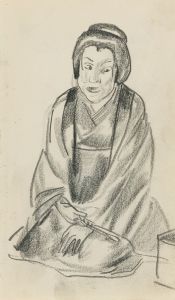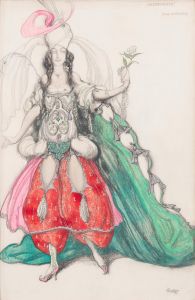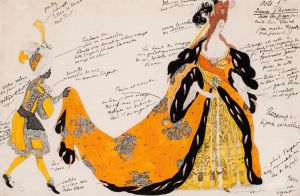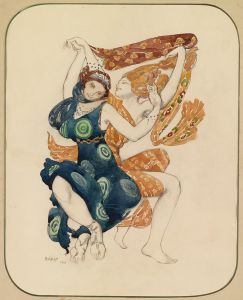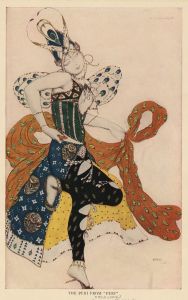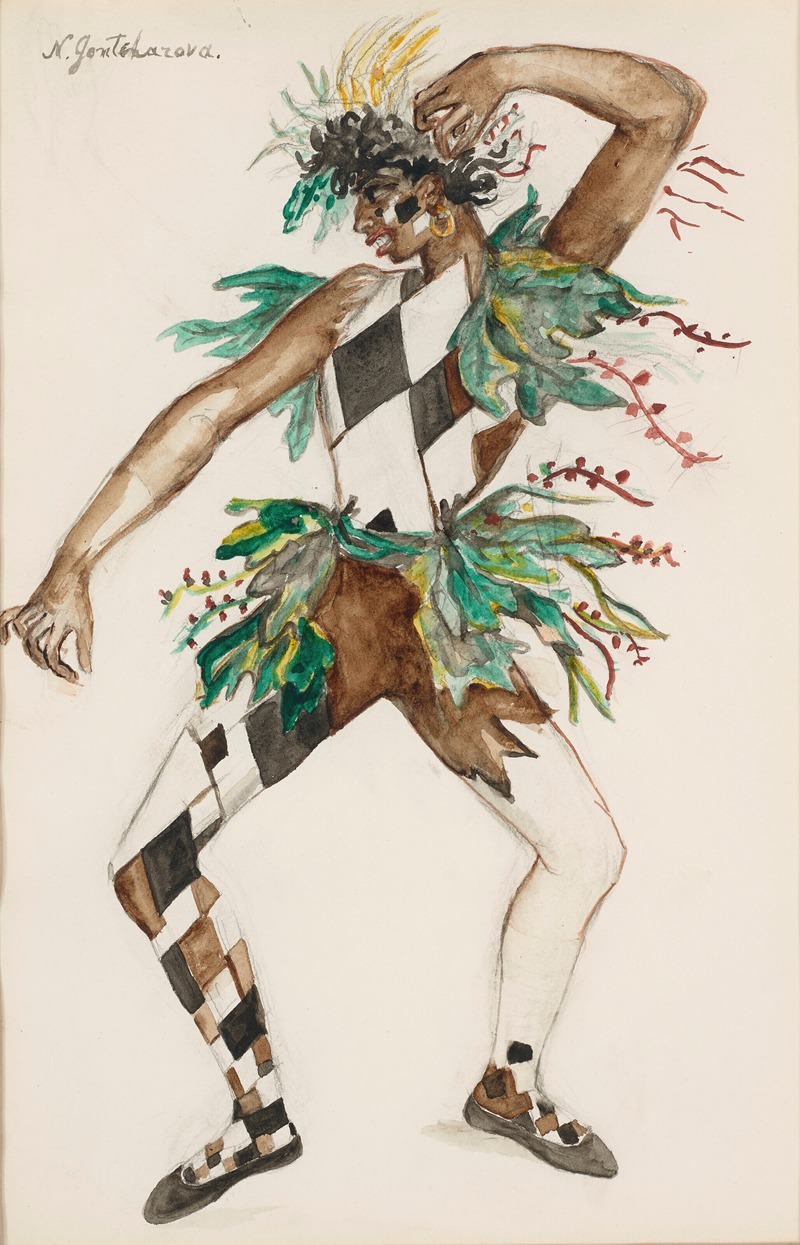
African dancer
A hand-painted replica of Léon Bakst’s masterpiece African dancer, meticulously crafted by professional artists to capture the true essence of the original. Each piece is created with museum-quality canvas and rare mineral pigments, carefully painted by experienced artists with delicate brushstrokes and rich, layered colors to perfectly recreate the texture of the original artwork. Unlike machine-printed reproductions, this hand-painted version brings the painting to life, infused with the artist’s emotions and skill in every stroke. Whether for personal collection or home decoration, it instantly elevates the artistic atmosphere of any space.
Léon Bakst, a renowned Russian painter and scene and costume designer, created the artwork "African Dancer" in the early 20th century. Bakst is best known for his work with the Ballets Russes, a groundbreaking ballet company founded by Sergei Diaghilev, which revolutionized the performing arts with its innovative productions and collaborations with leading artists, composers, and choreographers of the time.
"African Dancer" exemplifies Bakst's fascination with exoticism and his ability to blend vibrant colors, dynamic compositions, and intricate patterns. Although specific details about the creation and exhibition history of "African Dancer" are limited, it is consistent with Bakst's broader artistic style, which often drew inspiration from various cultures and historical periods. His work frequently incorporated elements from the Middle East, Asia, and Africa, reflecting a broader trend in early 20th-century European art that sought to explore and romanticize non-Western cultures.
Bakst's art is characterized by its bold use of color and elaborate designs, which are evident in "African Dancer." The painting likely features a dancer in a moment of expressive movement, adorned in a costume that highlights Bakst's skill in textile design and his interest in theatricality. The use of rich, contrasting colors and detailed patterns would have been intended to capture the viewer's attention and convey a sense of drama and vitality.
The depiction of an African dancer aligns with the period's fascination with primitivism, a movement in which Western artists looked to the art and culture of Africa, Oceania, and indigenous peoples as sources of inspiration. This interest was often rooted in a desire to break away from traditional Western artistic conventions and explore new forms of expression. However, it is important to note that such representations were frequently based on stereotypes and a lack of understanding of the cultures being depicted.
Bakst's work, including "African Dancer," played a significant role in shaping the visual language of the Ballets Russes, influencing not only the world of dance but also fashion and interior design. His ability to create visually stunning and thematically rich designs made him a key figure in the development of modern art and theater.
While "African Dancer" may not be as widely recognized as some of Bakst's other works, such as his designs for "The Firebird" or "Scheherazade," it remains an example of his artistic vision and his contribution to the cultural exchanges that characterized the early 20th century. Through his art, Bakst helped to redefine the boundaries of performance and visual art, leaving a lasting impact on both fields.







